As a person who is still relatively new to the world of birding I feel that I have made some pretty big strides in figuring out the wide variety of birds that I see and hear. I might not identify them all but I definitely manage to put a name to the vast majority that cross my path.
But while I am out there looking for birds I see many other interesting things. Mammals and reptiles are mostly easy to figure out, but my botanical knowledge is virtually nonexistent, and I know less about the huge variety of insects and spiders and other creatures that fit into the catchall category of creepy-crawlies than I do about plants. I must improve my identification skills if I am to be able to describe myself as an overall naturalist in addition to being a birder.
And butterflies seem like the ideal stepping stone from birds to bugs. After all, they fly, they are often brightly colored and strikingly patterned, and if I can’t figure out what they are in the field I can always get a picture and identify it from a field guide while comfortably curled up on my couch. Plus, what better way is there to spend a hot summer day than to watch butterflies flutter by?
Up until recently, there were only three species of butterfly I could confidently identify: Monarchs, Eastern Tiger Swallowtails, and Mourning Cloaks. Virtually everyone knows what a Monarch looks like but here are the other two:
I particularly like the Mourning Cloak because they emerge so early in the spring, giving additional incentive to be out looking for early migrants of the avian persuasion, and I like their ragged appearance that allows them to hide amid the leaf litter.
Lately, I’ve learned that several a couple of the most common species of butterfly here in the northeastern United States are actually introduced invasives infiltrating from the other side of the Atlantic. Cabbage Whites, the small white butterflies that appear over every field and roadside patch of wildflowers and are easily identified by their white wings with small, dark spots and their ubiquity, were introduced in the nineteenth century. European Skippers, small, fuzzy and mostly orange, are still expanding their range, even though they are already abundant across the northeast.
One of my favorite species I’ve learned to identify are Pearl Crescents, which are to me as precious as their name implies. I spent a couple hours one afternoon this May watching and photographing them feeding on clover blossoms.
So in anticipation of putting this post together I went for a stroll this evening at Five Rivers Environmental Education Center, my favorite local patch, hoping to find a species I hadn’t yet identified. I found one but it wasn’t in decent camera range until I jumped like a mountain goat onto an old concrete pillar sticking out of a pond, risking my dry feet and my dignity, because that’s what’s expected of us 10,000 Birds bloggers. Even after my exertions the pictures weren’t great but once I got home and pulled out my Kaufman Field Guide to Insects of North America I quickly realized the butterfly was a Red Admiral.
Now I know that identifying these common butterflies is probably old hat to some of you out there. So if you are yawning to yourself thinking “This Corey character, what an amateur,” while rolling your eyes at my humble attempts to learn the lepidoptera I would ask you to put in the comments your recommendation for a butterfly-only field guide. That way, when I find a butterfly not in my insect guide I won’t have to waste your precious time by posting its picture here and asking for help.


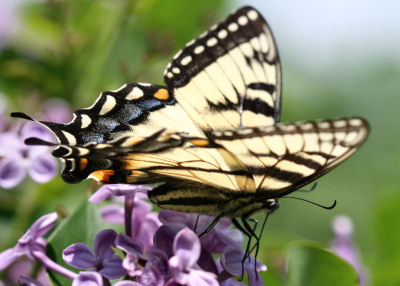
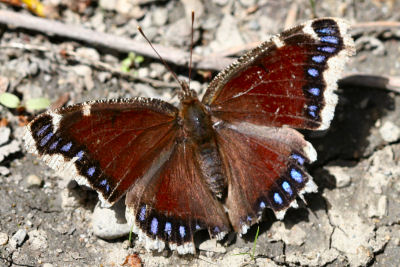
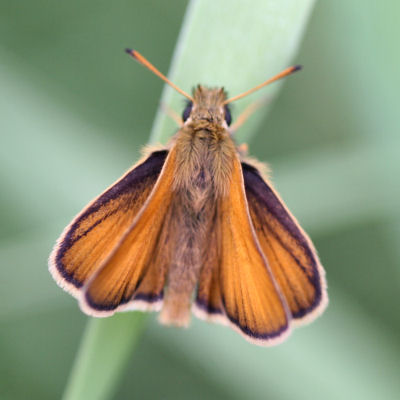
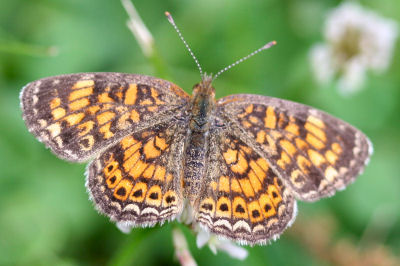
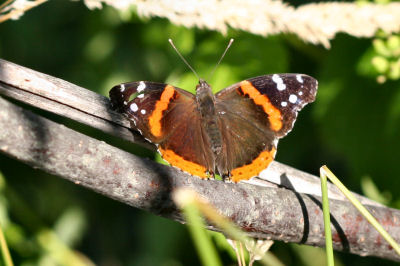











Good post. You may be interested to know that we get Red Admirals here in our garden in the UK – it has a massive range right across the northern hemisphere. Oh, and we Brits know the Mourning Cloak as the Camberwell Beauty – funny how one set of taxonomists saw a dark butterfly and thought of clothes worn by a grieving spouse, and the other saw something exotic and worthy of being called “beautiful”.
That was the perfect post about butterflies for me.I’m just starting to make i.d.’s on butterflies.-I have seen the Mourning Cloak, Eastern Tiger Swallowtail, and a few others.-Maybe the Kaufman field guide will make it on to my Christmas list, or better yet I’ll just buy one.-Nice photos!
This year was my first able to ID more than the three butterflies you mentioned initially. I really like the Red Admiral. You may not recall, but Patrick pointed out a White Admiral when we were chasing the Henslow’s Sparrow.
@ Jo: Thanks, and I wonder if anyone is trying to synthesize the different common names like what is being attempted with birds…
@Larry: Glad you liked it and I strongly recommend the Kaufman guide.
@Mike: I had forgotten about that. Being out in nature with Patrick is such a joy…one of the reasons I aspire to be a “naturalist.”
I aspire to be a naturalist too! 🙂 Thanks Corey. Check out the “Butterflies through Binoculars” series. There is a “NY-Boston-Washington” version that, I think, is out of print but should be easy to find. If not, the “East” version is an excellent substitute. I have the “East” version because I didn’t know the other one existed at the time. The Kaufman guide has awesome photos and works as an excellent additional resource. As an every day “local” field guide, it can be overwhelming though.
Interestingly, the White Admiral is more closely related to the Red-spotted Purple (it’s considered a race of this species these days I think) than it is to the Red Admiral.
And, *I think* those two imports you mentioned are the only two European butterflies we have in the US (or at least in the Northeast). Thank goodness!
Forgot to comment on the pics! Awesome! That European Skipper especially!